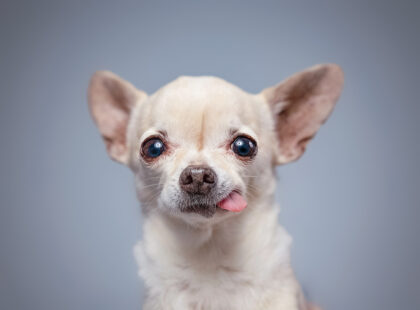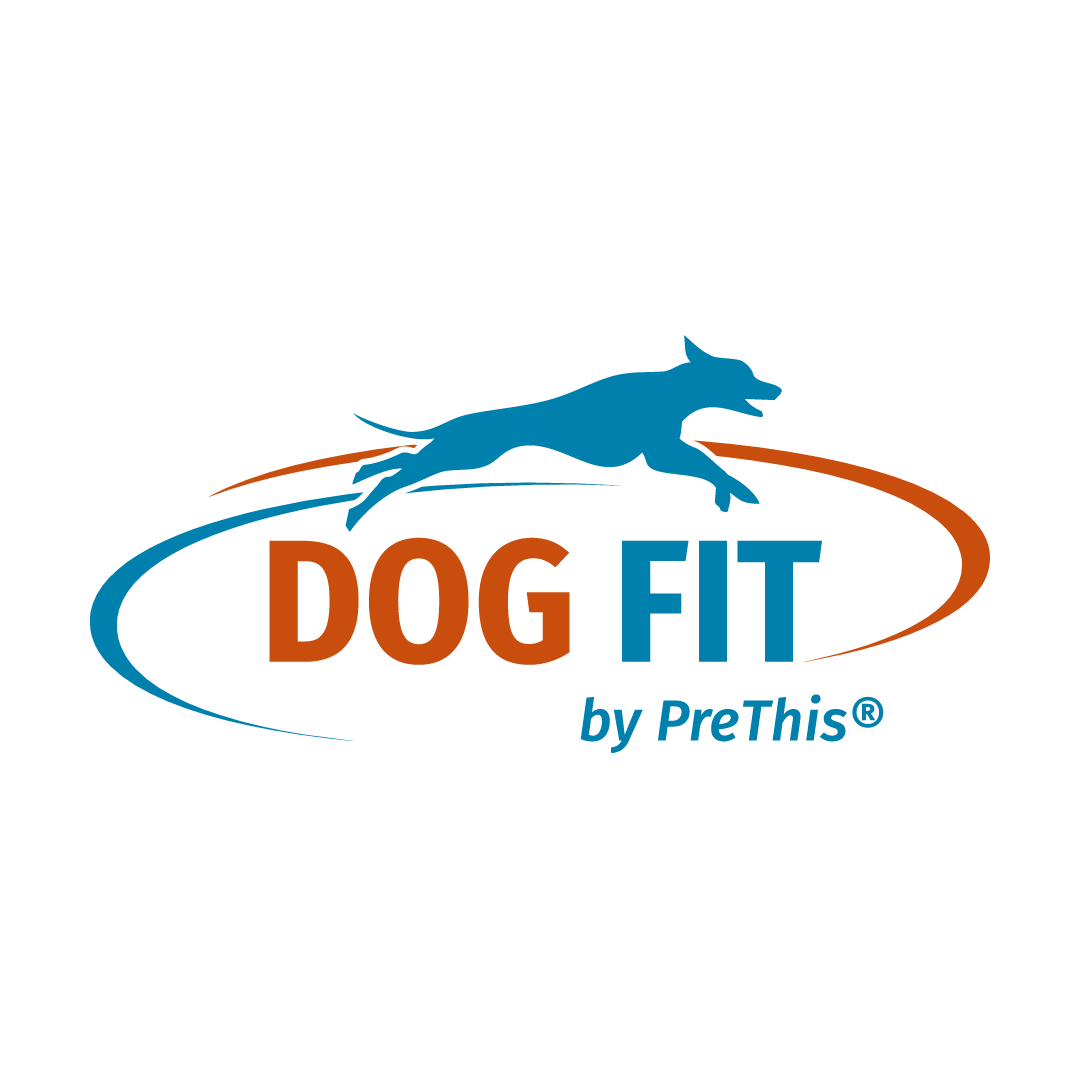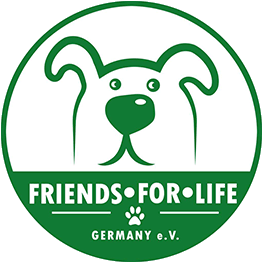 The term “fashionable dog” alone pisses off many dog owners. Yet it is quite normal that, depending on certain fashion trends, some dog breeds are kept much more often than others. The term “fashion dog” by no means refers only to handbag dogs that have been degraded to accessories, but rather to all dog breeds that are temporarily represented more often. But first things first.
The term “fashionable dog” alone pisses off many dog owners. Yet it is quite normal that, depending on certain fashion trends, some dog breeds are kept much more often than others. The term “fashion dog” by no means refers only to handbag dogs that have been degraded to accessories, but rather to all dog breeds that are temporarily represented more often. But first things first.
What makes a dog a fashion dog?
Whether it’s a Chihuahua, Dalmatian or any other breed – the question is actually much more why some dog breeds become fashion dogs and others do not. This question is not easy to answer, because the phenomenon of fashion dogs has been around for a very long time. In the 1920s, for example, elegant greyhounds were particularly IN, today it’s more the mini breeds like Chihuahua and Prager Rattler. And of course there is not just one fashion dog, but often several different breeds at the same time that are given this dubious honour. Probably the most important thing is that the appearance of the respective dog breed fits the attitude to life of the time and the respective group.
However, the greatest influence on the emergence of a trend today is probably also in dog keeping the mass media: dogs that are shown preferentially in films, TV and advertising always enjoy the greatest popularity. Whether it is the pretty Border Collie from the dog food commercials, the chic Dalmatian from the film 101-Dalmatians or the Chihuahua that Paris Hilton inevitably carries around as an accessory in her handbag – dog breeds that are present have a large fan community and also a correspondingly large number of potential owners.
The fact that many people think a dog breed is great is not in itself a problem – neither for the dog nor for the owner. Unfortunately, the problems often arise quite soon on their own.
The problems of fashion dogs …
One problem of dog breeds that have been chosen as fashion dogs is quickly described: It is money. Because a dog breed that is popular can logically also be sold well. In other words: In addition to reputable breeders, irresponsible breeders are increasingly coming onto the scene, sensing their chance for easy money.
It is quickly forgotten that dogs are living beings and instead the rules of the free market economy take effect. In order to sell more dogs and not be stuck with the “goods”, prices are lowered, “bargain dogs” appear – after all, even low-income earners would like to have a fancy fashion dog without having to pay much for it. In order to make more profit, important health examinations are neglected and bitches are abused as breeding machines. This not only affects the health of the respective dog, but the health of the entire breed.
In addition, rapid breeding often places more emphasis on appearance than on health or character. While in a serious breeding the breed-typical character of the parents always plays a role, a multiplier usually only pays attention to the visual aspects. Thus, within a few decades of uncontrolled breeding, the dachshund breed, which was strictly specialised in hunting badgers and foxes and which thought independently, became a stubborn dog, extremely susceptible to health problems, whose short legs have lost their meaning when kept as a family dog, where they only show their negative aspects.
The selection of different coat colours also often leads to genetically determined disabilities such as deafness (white coat colours are particularly often affected here because the responsible genes are linked). These could be avoided without major problems by conscious selection of the parent animals – but in the case of bargain dogs, hardly any multiplier takes the trouble to select the parent animals accordingly.
Another point that must inevitably be mentioned when talking about fashion dogs is the problem of overbreeding. Breed characteristics, such as the short muzzle of the Pug or the large, bulging eyes of the Chihuahua, are exaggerated by rapid selection breeding – inbred health problems, such as too narrow teeth, are the result: the Pug can often hardly breathe normally, the Chihuahua struggles with conjunctivitis, unavoidable eye injuries, patellar luxation and tartar. In order to compensate for these defects, decades of painstaking re-breeding are often necessary.
… and the problems of owners of fashion dogs
But it is not only the dogs themselves and their breed health that suffer from being a fashionable dog. Often the dream of owning a pedigree dog takes an unexpected turn for the owner. Anyone who buys a dog cheaply from a breeder also runs the risk of acquiring an animal that is ill or at least has health problems. These cause high veterinary costs for a lifetime. But even those who choose their dog from a breeder may not be happy with their choice.
Because especially people who go with the trend when choosing their dog do not always take the time to thoroughly inform themselves in advance about the necessary keeping conditions and the breed-specific requirements. And so it is not uncommon for the sweet Border Collie puppy to quickly become underchallenged in a two-earner household and begin to take advantage of its owner’s professional absence to “rearrange” the home. Then inexperienced and uninformed owners are quickly overwhelmed and dump the dog at the shelter or hawk it through classified ads. With a bit of bad luck, the dog may suffer the same fate again. It is only a matter of time before the first serious behavioural problems develop.
In addition, there are certain requirements that some breeds place on their owners: Particularly intelligent breeds, such as the Australian Shephard or the Border Collie, look beautiful and are wonderful animals when kept properly, but they quickly become annoying and even aggressive if not kept properly. Guard dogs, such as the Malinois or the Doberman, quickly become unpredictable bullies without an appropriate property to guard and without consistent training. And even the beautiful Weimaraner will quickly become a biter without a task (whether hunting guidance or another meaningful occupation), because the man-sharpness bred over centuries will show through without occupation.
In other words: fashion or no fashion – before acquiring a dog, you should always thoroughly check whether the dog you want is suitable for you and your life situation!
When the trend becomes dangerous
Besides causing a lot of inconvenience for the dog and its owner, such a trend can sometimes also be really dangerous. Molossians are a good example of this. In addition to small toy dogs such as pugs, Chihuahua and Shi Tzu, these massive, muscular dog breeds currently have a large number of fans.
Here, too, the problem is not the breed itself: whether Cane Corso, Dogue de Bordeaux, Kangal or even Pitbull – no dog breed is inherently evil. On the contrary, these breeds also make wonderful companions when kept in a breed-appropriate manner. However, it cannot be denied that a Cane Corso, for example, causes much more damage when it bites or even jumps at someone than a Chihuahua does. In addition, many of the molosser breeds need consistent and strict training, which requires a lot of experience, dog knowledge and sovereignty. If such a “capital fellow” falls into the wrong hands, it can become a deadly danger.
The problem here is probably the question of what “wrong hands” actually are: Because from a certain weight class, even the most benign dogs can make bones break with a joyful greeting. If you can’t or don’t want to provide 100% education, you should keep your hands off Molossians – even if breed lovers like to glorify them as “gentle giants”. We can only hope that this trend will not spread – for the good of the dogs and the people.
Weg vom Trend und hin zum gesunden besten Freund
Even though it cannot be denied that some small fashion dogs look cute at first sight, slender Weimaraners embody pure elegance and the Cane Corso is a fascinating image of pure power – such individual, mostly visual characteristics of a dog breed should never be the deciding factor when it comes to getting a dog.
While there is nothing wrong with letting the obvious advantages of a popular dog breed speak for itself, certain breeds should not be supported. These definitely include the so-called toy dogs. Too many diseases, physical and mental idiosyncrasies, which nature had not intended in this way, plague such breeds bred according to human ideas. Moreover, many of them would not be able to survive in nature. We should just let dogs be dogs, as close as possible to their ancestors. And yet there are very old and wonderful breeds that are stable in health and mentally. Why do humans always have to have a hand in giving so many dogs a miserable and sickly existence? In addition, however, you should never lose sight of the fit between the dog and you and the fact that it is still a living being with needs and demands, because not every person is also a dog person.

Every day we experience the wonders of nature with our dogs. This inspiration is the basis for our lives and our products. In our magazine we share with you our passion for these wonderful animals. Visit our socials and become part of the DOG FIT community.


Leave a Reply